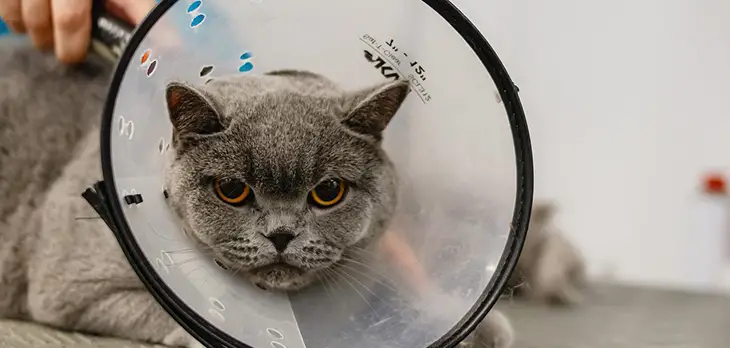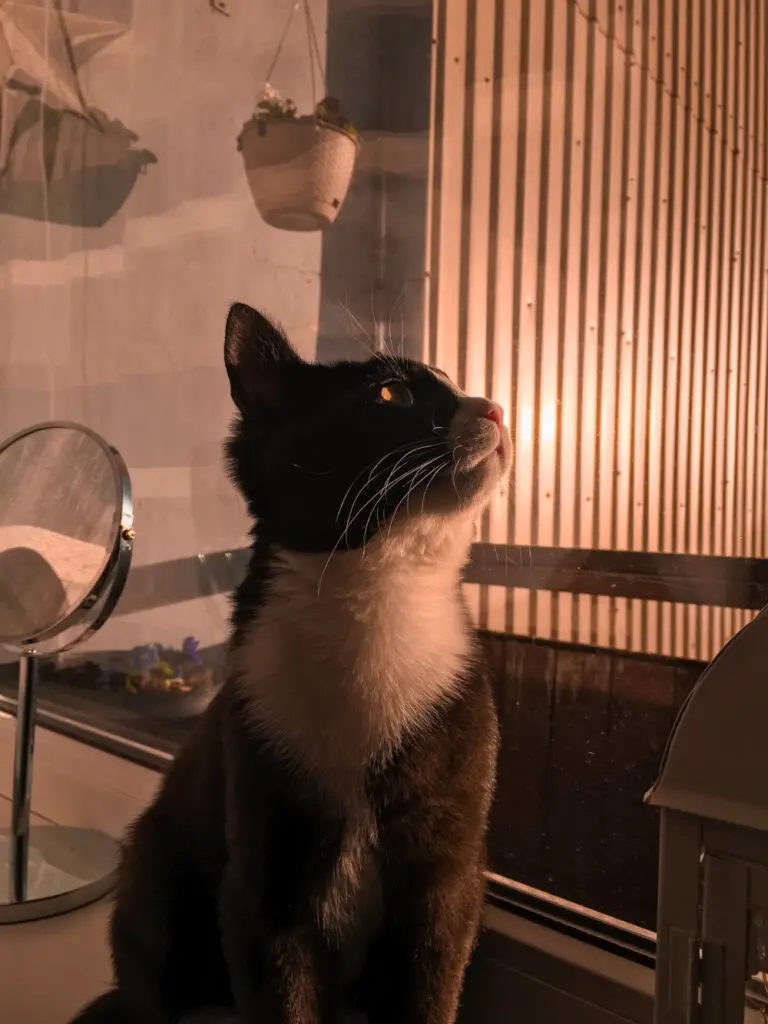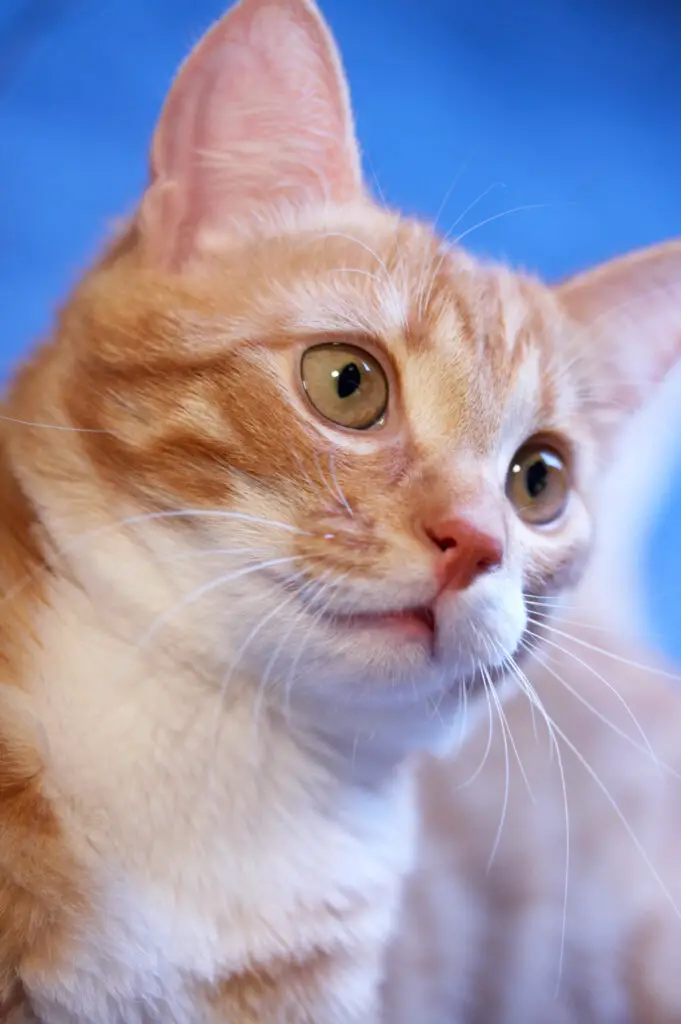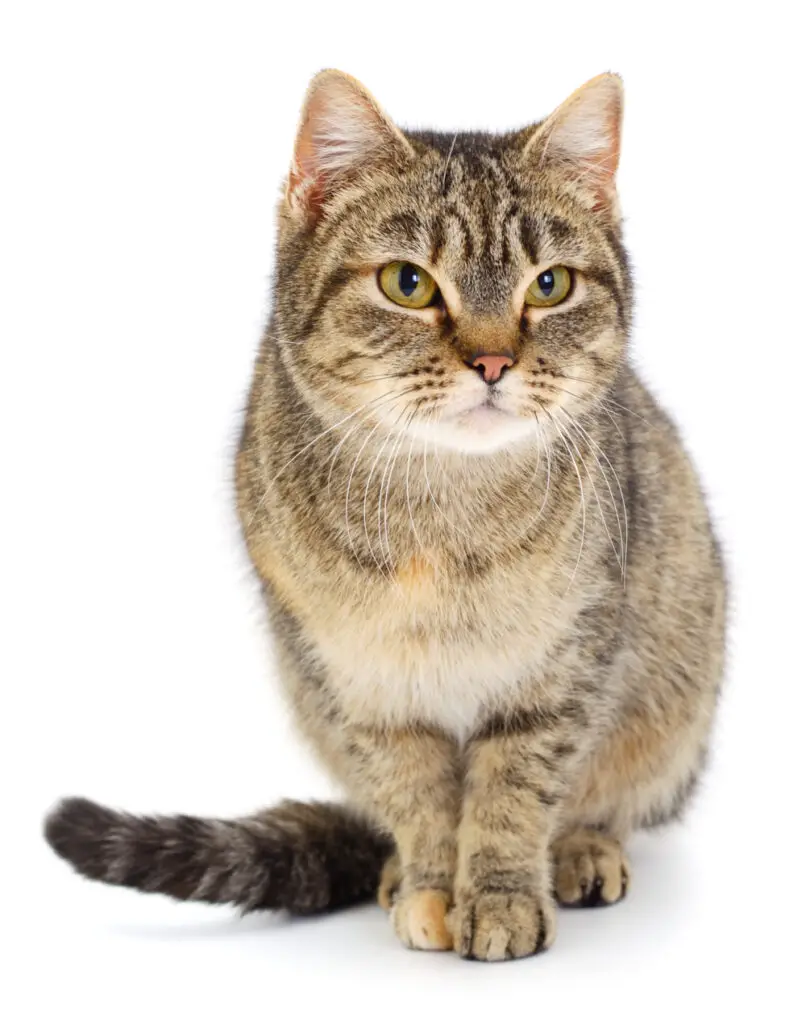How Long Do Dissolvable Stitches Last In Cats?
Veterinarians often use dissolvable stitches on felines who underwent surgical procedures. One common question is this: how long do dissolvable stitches last in cats?
The answer to this depends on the specific sutures the vet used as well as your cat’s healing process. Below, I discussed this topic based on my experience as a pet owner over the past years.

How long do dissolvable sutures heal in cats?
Dissolvable sutures often get absorbed within 10 to 14 days. However, this period can be longer, depending on the suture material.
Veterinarians use a variety of sutures with different materials and tensile strengths. This will dictate how fast it will be dissolved once used on a cat.
For example, the Vicryl Rapide suture is made of polyglactin 910. This material will take 42 days to fully absorb and its tensile strength will be gone by 14 days.
On the other hand, a suture called PDS II sold under the brand Ethicon is made of polydioxanone. This material takes up to 210 days to be fully absorbed by the pet’s body.
Meanwhile, there’s also a type called Fast-Abs Gut made of sheep submucosa. It only takes 21 to 42 days to dissolve and its tensile strength will be gone after 7 days.

Take note that there are dozens of suture brands and types that a vet can use. It’s best to ask your cat’s attending veterinarian about the specific brand and how long it will take to fully dissolve.
Remember that it’s the vet’s discretion to choose the type of suture to use on your cat. This depends on the kind of surgery, part of the body being stitched, and the required strength to close the wound.
How do I know if my cat’s stitches are healing?
Proper post-surgery care is crucial to avoid complications and infections on your cat’s dissolvable stitches. This is also to ensure that the stitches are healing and being absorbed within the expected pace.
The following are signs that your cat’s stitches are on their way to healing after one week:
- No discharge on the wound
- The edges of the wound are sealed.
- The redness is limited or completely gone.
- No protruding tissue or flesh
- The stitched area isn’t swelling.
- No bleeding from the wound.
However, if your cat’s stitched wound is draining and is still swollen after one week, you should call the veterinarian right away. This is a sign of infection and complications may occur if it’s not addressed right away.

Take note that since cats love roaming around and have no idea about recovery, they can easily contract infections. Also, very active breeds are prone to problems post-surgery since movement can cause swelling and delayed healing.
How do I take care of my cat’s stitches?
Taking care of a cat after surgery isn’t easy, especially if you have an active breed. It’s important to minimize movement and to follow the vet’s orders.
Here are some of the points you should keep in mind:
1. Keep the suture area dry
It’s important to keep the wound area dry all the time to prevent the growth of bacteria. This means that you should never bathe your cat until the sutures have been absorbed and the wound has healed.
Aside from that, you should prevent your cat from licking the stitched area. This is why you should put the feline in an Elizabethan cone until its wound has healed.
2. Clean the wound properly
The vet will surely provide instructions on how you can keep your cat’s stitches clean. Make sure that you follow the vet’s instructions religiously to speed up your cat’s recovery.
Take note that you should only use medications and cleaning agents that the vet prescribed. Should irritations occur on your cat, you should call the veterinarian immediately.
3. Limit your cat’s movement
If possible, you should put your cat inside a cage to help it rest and calm down. Ensure that the cage is cozy with a bed, food, water, and your feline’s favorite toy.

The good thing is that not all surgical procedures require crating or caging. You can also ask the vet about using a sedative to help your cat calm down and rest better.
4. Inspect the sutures regularly
It’s important to keep an eye on your cat’s stitches at least twice a day. I also recommend taking photos of the suture area every day, so you can compare and see if it’s healing.
If the wound seems to be swelling more by the day, you should let the vet know. It will also help if you can show the photos you’ve taken.
5. Don’t let your cat mingle with other pets
It’s best to keep your cat isolated until its wound is fully healed. This is to avoid other cats or dogs from scratching the suture area.
Aside from that, keeping your healing cat away from other pets will prevent excitable behavior and exertion. Instead, you should give your kitty extra attention to make it feel safe.
Can I take my cat’s cone off after 7 days post-surgery?
The duration to which your cat needs to wear a cone depends on the procedure it underwent.
For example, if your kitty had been neutered, you should keep the cone on for at least 7 days.
However, spayed female cats should wear a cone for at least 10 to 14 days for healing.
Overall, the more intensive the surgery is, the longer your cat needs to wear that cone. After all, waiting for a few days won’t hurt if you want to err on the side of caution.

How long do I stop my cat from licking its stitches without a cone?
It’s challenging to prevent a cat from licking its stitches without a cone. However, there are instances where a feline can’t wear a cone, including having injuries on the neck or being extremely stressed while wearing one.
In this case, you can try inflatable collars. It’s like the neck pillow you’ll wear on a long-haul flight, which is softer and more comfortable for a cat.
There’s also a soft e-collar, which is similar to the Elizabethan type. But instead of the stiff material, this one is made of fabric that’s quieter and easier on the feline’s neck.
What should I do if my cat’s dissolvable stitches are sticking out?
While dissolvable sutures get absorbed into the body, the part located outside the body may not fully disintegrate. In this case, it has to be manually snipped.
Before you do this, consult the vet to ensure that it’s safe to remove the suture that came undone. This is usually performed after the wound has healed and there’s still a thread that’s sticking out.
However, if there’s a suture sticking out and the area is swelling, you should take your dog back to the vet. This might be a sign of a problem in the wound area that requires treatment.
Why are my cat’s dissolvable stitches not dissolving?
It’s important to understand that dissolvable stitches don’t disintegrate in thin air. Your cat’s body enzymes will be the ones to break down the material and absorb it.
With that, it’s normal to see small portions of the sutures not being absorbed as fast as the ones in close contact with the skin. But if you’re worried, it doesn’t hurt to consult your cat’s veterinarian.
Also, sutures that don’t dissolve will always find their way out of your cat’s body. This may appear as if a thread is sticking out after the wound has healed.
Conclusion
How long do dissolvable stitches last in cats? This depends on the suture material that the vet used.
In general, most veterinary sutures will dissolve in 10 to 14 days. However, durable ones may take a few more weeks to fully disintegrate.
It’s best to ask the veterinarian, so you’ll know what to expect during your cat’s recovery period.
